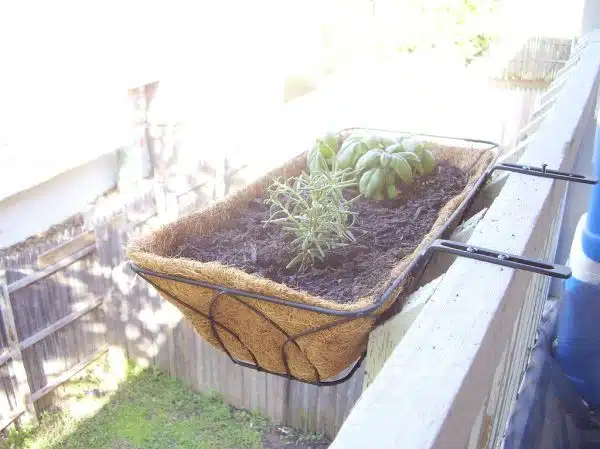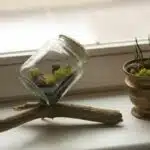Window box planters are a beautiful addition to any home or garden. Not only do they add aesthetic appeal, but they also provide an opportunity for individuals to exercise their green thumb and grow their own plants. Building a window box planter can be an easy and fun DIY project that allows individuals to showcase their creativity while caring for their plants.
When designing a window box planter, it is important to consider the location where it will be placed. The amount of sunlight and wind exposure will impact the types of plants that can thrive in the planter. Additionally, the size and style of the planter should complement the architecture of the building it will be attached to. By taking these factors into consideration, individuals can create a window box planter that not only adds beauty but also serves as a functional piece of art. In this article, we will explore how to build a window box planter step-by-step and provide tips on selecting appropriate plants for optimal growth and maintenance.
Selecting The Right Location For Your Window Box Planter
When it comes to building a window box planter, selecting the right location is crucial for the success of your plants. Choosing the wrong location can limit plant growth and affect plant health. Therefore, before you start building your window box planter, it is important to consider where you will place it.
One important factor to consider when choosing the location for your window box planter is sunlight. Plants need an adequate amount of sunlight to grow properly, so you should choose a location that maximizes sunlight exposure. Ideally, you want to place your window box planter in an area that receives at least six hours of direct sunlight per day. This will ensure that your plants receive enough light and are able to thrive.
Another factor to consider when selecting the right location for your window box planter is the type of plants you want to grow. Some plants require more shade than others, while some need full sun exposure. It’s important to choose plants that are suitable for the amount of sunlight they will receive in their new location. By taking these factors into consideration, you can ensure that your window box planter has a prime location and that your plants will thrive. In the next section, we will discuss how to choose the best materials for your window box planter to ensure its longevity and durability.
Choosing The Best Materials For Your Window Box Planter
A window box planter is a wonderful way to add some greenery and beauty to an otherwise dull space. However, choosing the right materials for your planter is crucial to ensure its longevity and overall look. Just like how each plant has specific requirements for growth and health, each material used in building your planter has its own benefits and drawbacks.
Metal is a popular choice among garden enthusiasts because of its durability and attractive appearance. It can withstand harsh weather conditions and requires minimal maintenance. Plastic is another option that provides excellent drainage for plants while being lightweight and easy to clean. Wood, on the other hand, adds a natural warmth and charm to any space. Cedar, redwood or teak are ideal choices since they are naturally resistant to rotting and insects.
When selecting the best material for your window box planter, consider eco-friendly options such as reclaimed wood or recycled plastic. These materials not only reduce waste but also promote sustainability in gardening practices. Moreover, they add character to your garden while reducing environmental impact.
Choosing the right materials for your window box planter is essential for creating a functional and beautiful garden feature. The benefits of metal, plastic or wood vary depending on the requirements of your plants as well as personal preferences. Remember to consider eco-friendly options when making your decision so that you can enjoy a sustainable gardening experience while enhancing the natural ambiance of your home’s exterior. In the next section, we will discuss how to measure and cut the wood for your planter with precision and ease.
Measuring And Cutting The Wood For Your Planter
One of the most important aspects of building a window box planter is measuring and cutting the wood accurately. Measuring accuracy is crucial to ensure that your planter fits perfectly in the intended space. Before you begin, make sure to measure the area where you want to place your planter, taking into account any obstructions such as windowsills or air conditioning units.
When it comes to cutting techniques, accuracy is key. You will need to use a saw to cut the boards for the sides and bottom of your planter. If you are not confident with using a saw, consider enlisting the help of someone who has experience in woodworking or take a woodworking class at a local community college. Make sure your cuts are precise by using a straight edge as a guide and double-checking measurements before making each cut.
Once you have measured and cut all of your pieces, you can move on to assembling the frame of your window box planter. By taking time and care during this step, you will ensure that your planter is sturdy and well-constructed, providing an attractive home for your plants for years to come.
Assembling The Frame Of Your Window Box Planter
Assembling the frame of your window box planter is a crucial step in creating a sturdy foundation for your plants. The frame can be made of various materials, including wood, metal, or plastic. Wood is a popular choice due to its durability and aesthetic appeal. However, metal and plastic are also excellent alternatives that can withstand harsh weather conditions.
When building your window box planter’s frame, there are several painting options available. You could choose to leave the wood natural for a rustic look or paint it to match the exterior of your house. Painting the frame with a water-resistant sealant will help protect it from moisture damage and prolong its lifespan. Additionally, you could add decorative elements such as stenciling or patterned tape for an extra touch of personality.
If you prefer alternative materials to wood, consider using metal or plastic for your window box planter’s frame. These materials offer unique benefits such as being lightweight and easy to clean. Metal frames are highly durable and resistant to warping from moisture, while plastic frames come in various colors and require minimal maintenance.
Now that you have assembled the frame of your window box planter, it’s time to add the bottom board. This step is essential as it provides support for your plants’ root systems and prevents soil from falling out through the bottom of the planter. Adding a mesh screen over the board before filling with soil can further prevent soil loss while allowing proper drainage for your plants’ health and growth.
Adding The Bottom Board To Your Planter
Once the frame of your window box planter is assembled, you can proceed to add the bottom board. This step is crucial to ensure that the soil and plants are contained within the box. Using screws or nails, attach the bottom board to the frame securely. Be sure to measure accurately so that there are no gaps that may cause soil or water leakage.
After attaching the bottom board, it’s time to add drainage material. This helps prevent water from accumulating in the box and causing root rot. You can use a variety of materials such as gravel or broken pottery pieces to create a layer at the bottom of the box. Ensure that this layer is thick enough to allow for proper drainage, but not too thick as it will take up valuable planting space.
Adding drainage material is an important step in building your window box planter. However, it’s not enough on its own. In the next section, we will discuss how to drill drainage holes in your window box planter. These holes will provide an outlet for excess water and help keep your plants healthy and thriving.
Drilling Drainage Holes In Your Window Box Planter
Drilling drainage holes in your window box planter is an essential step in ensuring the health of your plants. Without proper drainage, excess water can accumulate at the bottom of the planter and cause root rot, which can be fatal to your plants. To drill drainage holes, first, determine how many holes you need based on the size of your planter and the type of plants you will be growing.
Decorative options for drainage holes include using a diamond drill bit to create a pattern or design on the sides or bottom of your window box planter. Alternatively, DIY alternatives such as using a soldering iron or heated nail can also be used to create smaller drainage holes. However, it is important to ensure that these methods are done carefully and safely to avoid damaging the planter.
Once you have drilled the necessary drainage holes in your window box planter, it’s time to prepare it for planting. This involves adding a layer of gravel or rocks at the bottom of the planter before filling it with soil. This layer helps improve drainage by allowing excess water to flow freely through the soil and out of the drainage holes. Following this step will ensure that your plants thrive in a healthy environment conducive for growth and development.
As you begin preparing your planter for planting, consider selecting appropriate soil types and fertilizers suitable for your specific plant species. Doing so ensures that they receive adequate nutrients needed for optimal growth throughout their life cycle. With proper care and attention to detail during each phase of planting, you’ll be able to enjoy beautiful blooms all season long!
Preparing Your Planter For Planting
After drilling the drainage holes in your window box planter, it’s time to prepare it for planting. One of the key aspects is to choose the right liner material for your planter. The liner acts as a barrier between the soil and the wooden box, preventing water from seeping out and rotting the wood. You can choose from a variety of materials such as plastic, burlap, or coconut coir. Each has its own benefits and drawbacks, so make sure to choose one that suits your needs.
Once you’ve chosen your liner material, it’s time to add decorative elements to your window box planter. This is where you can let your creativity shine! Consider adding colorful flowers or foliage that complement each other. You can also include trailing plants or vines that spill over the edges of the planter for added visual interest. Don’t forget to consider the overall aesthetic of your home when choosing plants and decor for your window box.
Incorporating decorative elements into your window box planter can truly elevate its appearance and give your home a welcoming feel. But before you start planting, make sure to choose the right soil for your plants. In the next section, we’ll discuss how to select soil that promotes healthy growth and nourishment for your plants.
Choosing The Right Soil For Your Plants
The quality of soil you use in your window box planter is crucial to the growth and health of your plants. Mixing compost, peat moss, and vermiculite can provide optimal soil quality for your plants. Compost is a natural fertilizer that enriches the soil by adding essential nutrients such as nitrogen, phosphorus, and potassium. Peat moss helps retain moisture in the soil and provides good aeration. Vermiculite increases water retention capacity while also improving drainage.
Soil erosion can be a problem in window box planters due to their shallow depth. To prevent this issue, you can line the bottom of your planter with landscape fabric or burlap before adding soil. This will help keep the soil intact and reduce the risk of it spilling out from the bottom or sides of the planter.
By using a mixture of compost, peat moss, and vermiculite, you can create an optimal growing environment for your plants in your window box planter while also preventing soil erosion. The next step is selecting the best plants for your window box planter based on factors such as sunlight exposure and desired aesthetic appeal.
Selecting The Best Plants For Your Window Box Planter
- When selecting plants for a window box planter, the size of the plants should be taken into consideration to ensure proper spacing and fit.
- To create visual interest, the selection of plants should be thoughtfully combined in a way that coordinates colors, textures, and seasonal bloom times.
- Combining various types of foliage, such as evergreen shrubs and annuals, can provide an interesting mix of colors and textures that will help the window box planter stand out.
- Consideration should also be given to the amount of sunlight the window box planter will receive in order to choose the right plants that will thrive in the given conditions.
Choosing The Right Size Plants
When it comes to selecting the best plants for your window box planter, choosing the right size plants is crucial. Plant placement should be taken into consideration when selecting plants for your window boxes. Choose tall and upright plants such as spikes or grasses for the center of the box, while trailing plants such as ivy or petunias can be placed around the edges. This will create a visually pleasing display and prevent overcrowding.
Seasonal options should also be considered when selecting plants for your window box planter. For spring and summer, consider bright and colorful annuals such as pansies, marigolds, or zinnias. In fall, opt for mums or asters which add a pop of color to your outdoor space. Winter options include evergreens or holly that can withstand cold temperatures and provide year-round greenery.
Ultimately, choosing the right size plants for your window box planter requires careful planning and consideration. By taking into account plant placement and seasonal options, you can ensure that your window boxes are not only aesthetically pleasing but also thriving with healthy plants throughout the year.
Planting Combinations For Visual Interest
When it comes to selecting plants for your window box planter, it’s not just about choosing the right size. Planting combinations are essential to create visual interest and add a touch of elegance to your outdoor space. Garden designers and horticulturalists recommend using color schemes to achieve a cohesive look. For example, complementary colors such as purple and yellow can create a stunning contrast that draws attention to your window boxes.
Seasonal variations should also be considered when creating planting combinations. In spring and summer, pastel shades of pink, blue, and green can complement each other well. Alternatively, warm colors such as reds, oranges, and yellows can add vibrancy during the fall season. Incorporating evergreens or winter-flowering plants for the colder months can keep your window boxes lively throughout the year.
When planning planting combinations for visual interest in your window box planter, remember to balance height and texture. Choose tall plants for the center of the box and trailing plants for the edges. Mixing different textures such as broad leaves with spiky flowers can create an eye-catching display. By following these tips and incorporating color schemes and seasonal variations into your planting combinations, you can ensure that your window boxes are always thriving with healthy plants that bring joy to others.
Planting Your Window Box Planter
It’s time to move on to the next step in building your window box planter: planting. Did you know that vertical gardening has become increasingly popular in recent years? This technique allows gardeners to maximize their space and create stunning displays of plants. A window box is the perfect opportunity for vertical gardening, as it provides a small but impactful area for your plants.
When it comes to seasonal planting, there are a few things to keep in mind. First, consider the amount of sunlight your window box receives throughout the day. This will help you choose plants that are appropriate for the lighting conditions. For example, if your window faces north and doesn’t receive much direct sunlight, opt for shade-loving plants like impatiens or coleus. On the other hand, if your window gets a lot of sun, choose heat-tolerant plants like petunias or marigolds.
Remember that you can always switch up your plant selection depending on the time of year. In the spring and summer months, fill your window box with bright blooms and lush foliage. As fall approaches, swap out those plants for cooler weather favorites like pansies or mums. By doing so, you’ll keep your window box looking fresh and vibrant all year round.
Now that you’ve planted your window box planter, it’s important to ensure that your plants receive proper care and maintenance. In the next section, we’ll discuss watering and fertilizing techniques to help keep your plants healthy and thriving.
Watering And Fertilizing Your Plants
Once you have planted your window box planter, it is important to maintain its health through proper watering and fertilizing. Watering is crucial to keep the soil moist and ensure the plants receive the necessary nutrients. There are various DIY watering systems available in the market that can be easily installed in your window box planter. These systems include drip irrigation, self-watering pots, or a simple reservoir system.
For those who prefer organic methods, there are several options for fertilizer that can be used for window box planters. One option is compost tea, which is a nutrient-rich liquid made from steeping compost in water. Another option is fish emulsion, which is a natural fertilizer made from fish waste and provides essential nutrients such as nitrogen and phosphorus.
When using any type of fertilizer or watering system, it is important to follow instructions carefully to avoid over-fertilization or under-watering. Overuse of fertilizers can lead to burnt leaves or stunted growth while under-watering can cause wilting and death of the plants. Therefore, it’s essential to monitor soil moisture levels daily and adjust the watering schedule accordingly.
Proper watering and fertilization will help promote healthy growth and vibrant blooms in your window box planter. However, this isn’t enough alone; regular maintenance is also crucial for ensuring longevity of your window box planter. In the subsequent section, we will discuss some tips on how to maintain your planter effectively without damaging any plants or flowers.
Maintaining Your Window Box Planter
After building your window box planter, you’ll want to ensure that it stays healthy and beautiful. One of the most crucial aspects of maintaining your planter is choosing the right plant varieties. The plants you choose should be suited to the amount of sunlight your window receives, as well as the size and depth of the planter.
Preventing pests is another important consideration when maintaining your window box planter. To keep pests at bay, avoid overwatering your plants or leaving standing water in the bottom of the container. Additionally, regularly inspect your plants for signs of infestation and address any issues promptly.
To help you keep track of important maintenance tasks, consider creating a schedule. Below is a table that outlines some common maintenance tasks for window box planters and how often they should be performed:
| Task | Frequency |
|---|---|
| Watering | Daily |
| Fertilizing | Every 2-3 weeks |
| Deadheading flowers | As needed |
| Pruning | As needed |
| Cleaning planter | Once per season |
By following these tips and staying on top of maintenance tasks, you can ensure that your window box planter thrives all season long. In the next section, we’ll explore some creative ways to decorate your planter to add even more beauty to your home’s exterior.
Decorating Your Window Box Planter
Now that you have built your window box planter, it’s time to add some personality and style to it. Window box accessories are a great way to achieve this. Consider adding decorative brackets or hangers to elevate your planter, creating an eye-catching display for all who pass by. You can also add a trellis or lattice work at the back of your planter, which will provide support for climbing plants like vines and ivy.
Another way to decorate your window box planter is by creating creative plant arrangements that reflect your personal style. For instance, mix colorful flowers and foliage together for a vibrant look or choose a monochromatic palette for a more sophisticated feel. You can also experiment with different textures and shapes of plants – tall grasses, trailing vines, and cascading flowers will create depth and visual interest in your planter.
By incorporating window box accessories and creative plant arrangements, you can turn an ordinary window into an extraordinary display of nature’s beauty. Remember to have fun with it and let your creativity shine through!
Transition: Now that we’ve explored ways to decorate your window box planter, let’s take a look at some common issues that may arise while caring for it.
Troubleshooting Common Window Box Planter Issues
A beautiful window box planter can add a touch of elegance and beauty to any building. However, some issues may arise during the planting process that could lead to problems down the line. As a garden designer or horticulturalist, it is essential always to be prepared for common issues that occur when building window box planters.
One of the most significant problems you may encounter with your window box planter is pests. A wide range of insects and other pests love nothing more than snacking on your plants. To prevent this from happening, make sure you invest in pest control measures such as insecticides or natural remedies like neem oil or diatomaceous earth.
Another issue you need to address when building window box planters is water damage. Overwatering can cause root rot and attract fungus gnats, while under-watering can lead to parched soil and stunted plant growth. To avoid such problems, ensure that the planter has drainage holes at the bottom to allow excess water to flow out.
To further ensure your window box planter’s longevity, here are some tips to help you troubleshoot common issues:
- Make sure you choose sturdy materials that can withstand harsh weather conditions.
- Use high-quality potting soil with excellent drainage properties.
- Regularly inspect your plants for signs of pests and disease.
- Adjust watering frequency based on the season and plant species.
- Consider using companion planting techniques that help repel pests naturally.
By following these tips, you’ll be able to enjoy a thriving window box planter all year round without worrying about common issues like pest infestations or water damage. In our next section, we’ll discuss how best to showcase your beautiful creation and enjoy the fruits of your labor!
Enjoying The Fruits Of Your Labor: Showcasing Your Beautiful Window Box Planter
One of the most rewarding aspects of building a window box planter is showcasing it in all its glory. By planting creative combinations of flowers, herbs, and even vegetables, you can create a stunning display that will be the envy of your neighborhood. Whether you choose to use traditional planters or DIY accessories such as trellises or hanging baskets, there are countless ways to highlight the beauty of your window box planter.
When selecting plants for your window box planter, consider using a mix of colors, textures, and heights to create visual interest. For example, pair tall spiky plants with trailing vines and compact flowers for a dynamic display. Alternatively, select plants with similar characteristics such as varying shades of green or purple for a more cohesive look. And don’t forget to add some edible plants like tomatoes or strawberries for an unexpected twist.
DIY accessories can also take your window box planter to the next level. A trellis can provide support for climbing plants like roses or clematis while adding height and dimension to your display. Hanging baskets can be used to add extra depth and interest while allowing trailing plants like petunias or ivy to drape over the sides of the window box. With a little creativity and ingenuity, you can transform your window box planter into a work of art that will bring joy to all who see it.
Conclusion
Selecting the appropriate location for your window box planter is crucial to ensure that your plants thrive. Consider factors such as sunlight exposure and water drainage before deciding on a spot. Once you have found the perfect location, it’s time to choose the best materials for your planter. Cedar, redwood, and pine are all excellent options.
Measuring and cutting wood is an essential step in building your window box planter. Assemble the frame of your planter using screws or nails, and add a bottom board to prevent soil from falling through. Regular maintenance is necessary to keep your planter looking its best, including watering and cleaning.
Decorating your window box planter can be an enjoyable task that allows you to showcase your creativity. Use colorful plants and flowers to brighten up any space, or incorporate herbs for a functional touch. Troubleshooting common issues such as rotting wood or pests can help keep your window box planter healthy.
As a garden designer or horticulturalist, building a window box planter can enhance the aesthetic appeal of any outdoor space while providing practical benefits such as fresh herbs or beautiful blooms. By following these steps and incorporating personal touches, you can create a stunning addition to any home or garden. Remember always to select suitable materials for optimal functionality and maintain your planter regularly for long-lasting enjoyment.
Image Credits





























![How To Repair Rotted Wood 33 Texture : Altario Buick Estate Wagon : Rotting Faux Wood Paneling [1 of 2]](https://green-life.blog/wp-content/uploads/2023/05/z1CersK-gCjq-150x150.jpg.webp)